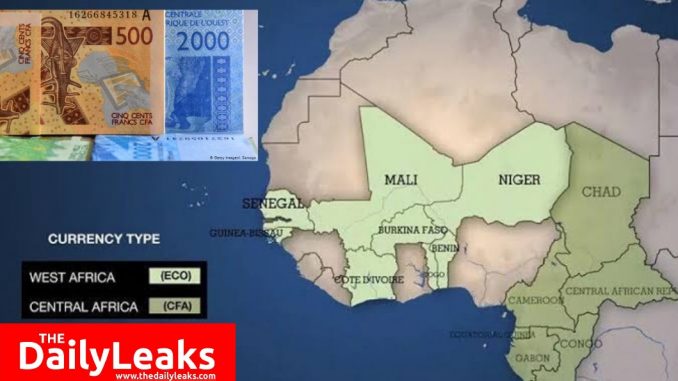
After dominating some West African states economy for 75 years, a historic monetary reform is underway, as a bill seeking to end the era of CFA franc has been adopted by the French Council of Ministers.
This was disclosed and confirmed by the spokeswoman for the French government, Sibeth Ndiaye, saying a reform to monetary cooperation in some eight West African Francophone countries leading to the end of CFA franc has been agreed upon.
Ndiaye said: “It was during an official visit to Ivory Coast in December 2019 that they (President Macron and French West African leaders) announced a historic reform of monetary cooperation that was to lead to the end of the CFA franc.”
ALSO READ: IMF approved $1.2305 billion emergency loan for Kenya, Uganda amid coronavirus pandemic
“As the President of the Republic had been able to stress, this symbolic end was to be part of a renewal of the relationship between France and African countries,” she said.
The transition of the CFA franc, a single currency used by eight French West African countries, will bring to fore the newly mooted Eco, a currency to be adopted by the entire West African bloc, ECOWAS.
The new economy regime will also mark the end of the centralisation of foreign exchange reserves of the eight West African states with the French Treasury.
With this new development, the Central Bank of West African States will no longer have to deposit 50 per cent of its foreign exchange reserves with the Bank of France.
Similarly, France will also have to withdraw its presence from the governance bodies.
The fixed parity of the future Eco currency with the euro will have to be maintained by eight countries: Benin, Burkina Faso, Côte d’Ivoire, Guinea-Bissau, Mali, Niger, Senegal and Togo.
Earlier before now, critics of the CFA franc perceive it as one of the last vestiges of France’s colonial domination in West African states.
The Central African version of the currency, XAF, however; continues to be used in six countries across the region.
About the twin CFAs
The CFA franc, its initials come from the French words for African Financial Community, was launched on December 26, 1945 as a “franc of the French colonies of Africa.”
Fourteen nations, divided into West and Central African groups, use the currency today. Their 155 million people account for 14 percent of Africa’s population and 12 percent of its GDP, according to the International Monetary Fund (IMF).
Two different CFA Franc users. Eight countries comprise the West African Monetary Union (WAMU), Benin, Burkina Faso, Ivory Coast, Guinea-Bissau, Mali, Niger, Senegal and Togo. Its Dakar-based issuing authority is the Central Bank of the West African States (CBWAS).
Six others are in the Central African Economic and Monetary Union (CAEMU): Cameroon, the Central African Republic, Chad, Equatorial Guinea, Gabon and Republic of Congo. Its issuing authority is the Cameroon-based Bank of the Central African States (BCAS).




